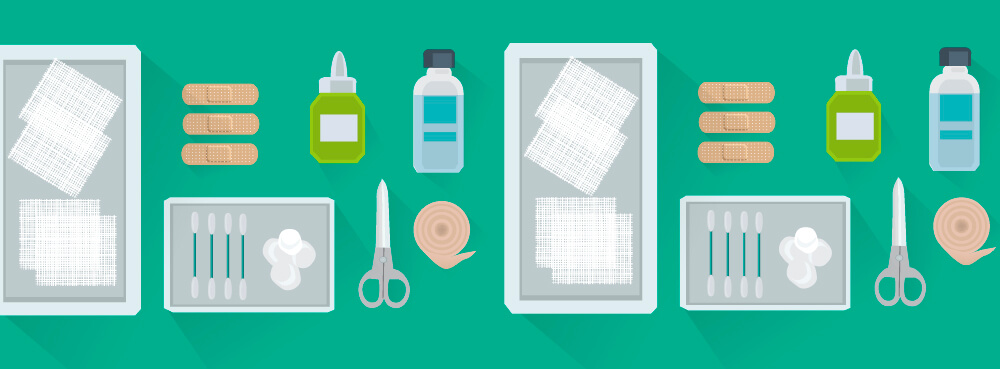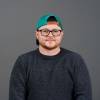What Is Offensive Waste?

Editor’s note: This post was originally published in September 2021 and has been completely revamped and updated for accuracy and comprehensiveness.
Ever had an insult thrown at you by a bin as you walked past? Although unlikely, if you did, you’d probably consider it to be offensive waste. But let’s look at another form of offensive waste that you’re more likely to encounter within the healthcare setting…
The offensive waste stream is crucial to your success in achieving the 20/20/60 waste split target outlined in NHS England’s Clinical Waste Strategy. Read on to learn more about how offensive waste is defined, common examples, and how it’s recovered.
TOPICS WE WILL COVER:
3 / Is Offensive Waste Hazardous?
4 / What Colour Are Offensive Waste Bins?
5 / Who Collects Offensive Waste?
6 / Offensive Waste and the NHS Clinical Waste Strategy
7 / The Recovery of Offensive Waste
8 / Sustainable Offensive Waste Disposal Solutions
What Is Offensive Waste?
One dictionary definition for the term “offensive” is—unpleasant or disagreeable to the senses: For example, ‘an offensive odour’. This definition is quite a fitting description of offensive waste within the healthcare environment.
In healthcare, offensive waste is defined as recognisable healthcare waste that is non-infectious and doesn’t contain any pharmaceutical or chemical substances. It’s the most common healthcare waste stream and is considered “offensive” due to its potentially unpleasant odour and appearance – although some offensive waste may not appear unpleasant (used PPE for example).
Offensive waste:
- Is NOT clinical waste
- Is NOT infectious, but may contain body fluids, secretions or excretions
- Is Non-hazardous
Offensive waste falls within EWC waste codes:
- 18 01 04 – Human-related healthcare
- 18 02 03 – Animal-related healthcare
- 20 01 99 – Municipal sources
See our resource: “What Are the EWC Codes for Healthcare Waste” for more information on identifying and classifying waste types in compliance with the European Waste Catalogue.
Offensive Waste Examples 
Offensive waste may be generated within the healthcare environment or in the wider community. Offensive waste which wouldn’t be generated outside of a human or animal healthcare environment includes:
- Single-use instruments (tongue depressors, specula)
- Used gowns
- Used PPE which has not been contaminated with bodily fluids
- Dressings from non-infectious patients
- Empty non-medicated intravenous bags
- Cardboard vomit/urine bowls
Offensive wastes typically discarded from households which could be generated outside of a healthcare environment include:
- Nappies and adult incontinence products (pads, colostomy bags, catheters)
- Used personal hygiene products
- Non-infectious dressings
Is Offensive Waste Hazardous?
In short, no. Healthcare providers throughout the UK are required to segregate waste based on its properties and potential to cause harm – so where does offensive waste fall in this regard?
Offensive waste can be described as an item that has been soiled by body fluids, but again, not contaminated by biological or hazardous materials, medicines, or chemicals that are deemed or suspected to be infectious – therefore it’s non-hazardous.
So offensive waste is not typically considered potentially dangerous to human or animal health, however, such waste can accumulate bacteria if not handled, stored, and disposed of properly.
More information on offensive waste can be found in the updated Health Technical Memorandum (HTM) 07-01: Safe and Sustainable Management of Healthcare Waste.
A note on handling offensive waste for disposal: Although by definition offensive waste is non-hazardous, ensuring your clothing and PPE are clean and practising good hand washing habits after handling it are recommended.
What Colour Are Offensive Waste Bins? 
Offensive waste should only be placed in a yellow and black striped ‘Tiger’ bag.
It’s the waste producer’s duty of care to correctly classify and describe their waste which is much easier to comply with when waste is segregated correctly according to hospital colour coding for waste.
Failure to comply can result in fines and penalties because different types of waste need different treatments – offensive waste is the most commonly overtreated waste in the healthcare industry, costing healthcare facilities across the UK thousands of pounds and excess CO2e that could be easily avoided.
Never place sharps inside an offensive waste bag, even if they’re contained in a sharps bin. Sharps are not considered offensive waste as they could pierce the bag so must always be disposed of in the appropriate sharps container.
It’s important to know that liquid offensive waste such as liquid faeces, urine, or vomit, shouldn’t be disposed of in this waste stream and ‘should instead be emptied to foul sewer’.
Who Collects Offensive Waste?
Sharpsmart is a certified waste contractor that ensures the responsible management of your offensive waste. Our refuse collection vehicles (RCVs) and regular pickups minimise your environmental impact by collecting your waste in bulk and efficiently transporting it to local treatment outlets with minimal road miles.
As long as your offensive waste has been segregated correctly (which we can help you with), we guarantee 100% diversion from landfill, converting all your offensive waste into energy through partnerships with trusted energy-from-waste facilities.
Our commitment to sustainability extends to rigorous due diligence, including comprehensive duty of care visits to ensure adherence to high standards for waste treatment and disposal.
Learn more about partnering with us for offensive waste disposal.
Offensive Waste and the Clinical Waste Strategy
As part of its Clinical Waste Strategy, NHS England encourages a 20-20-60 split of healthcare waste sent for treatment which breaks down as:
- 20% of waste sent for high-temperature incineration;
- 20% of waste sent for alternative treatment (AT);
-
60% of waste classified as offensive waste, which can be converted into energy.
By introducing the offensive waste stream and improving segregation practices the overtreatment of waste is easily avoidable, resulting in the diversion of the majority of generated healthcare waste from carbon-intensive treatments. The continued reduction of waste unnecessarily sent for high-temperature incineration is a huge step in the right direction on the route to net zero.
Need Support With Offensive Waste?
The Recovery of Offensive Waste
In line with its route to Net Zero, the NHS has a heavy focus on achieving 100% landfill diversion by continuing to push all healthcare waste up the waste hierarchy into more environmentally favourable positions.
As there are currently no technologies for recycling offensive waste, recovering energy from it through incineration is the best available method.
Offensive waste doesn’t need to be autoclaved or pre-treated before being sent for disposal or recovery because it’s non-hazardous. However, it may be shredded and further processed into refuse-derived fuel to make it more suitable for energy from waste processes, or suitable as a fuel for other purposes.
As noted earlier, the over-classification of offensive waste as infectious waste can lead to more expensive waste management and result in carbon-intensive treatments such as alternative treatment and high-temperature incineration.
How to Avoid Overclassifying Offensive Waste 
If there’s no good reason to believe an item is hazardous (infectious, chemically/pharmaceutically/cytotoxically contaminated or radioactive) – do not dispose of it in a yellow, orange or purple bin/bag or other container for hazardous waste.
Before disposing of an item in the infectious waste stream, consider whether the item is hazardous, or in fact, just unpleasant and therefore offensive. The most commonly over-classified items include:
- PPE – Only clinical waste if contaminated with infectious fluids, chemicals, or radiation.
- Single-use gowns and other items that touch patients – only clinical waste if hazardous or contaminated with infectious fluids, chemicals, or radiation.
Sustainable Offensive Waste Disposal Solutions
At Sharpsmart, we’re working with our partners across the UK to achieve Net Zero Together and one of the many ways we’re doing that is through the introduction and ongoing support of the offensive waste stream.
Through innovative solutions and blended learning materials, we work with you within the four walls of your facility to get the most out of your healthcare waste management.
Get in touch with one of our waste experts today and ensure your organisation practices correct segregation, maintains compliance, and benefits from the most sustainable treatment solutions for your waste.
Contact us to get started with our offensive waste disposal services.

